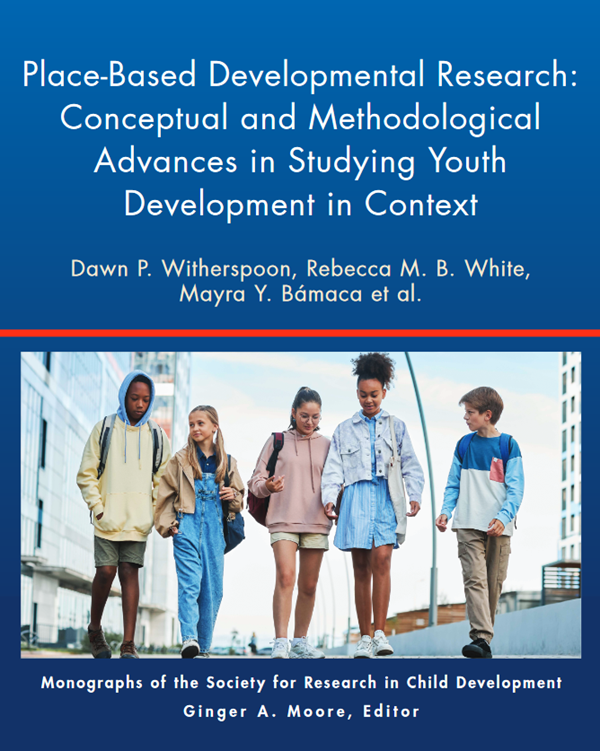执行功能的动态场理论:识别早期神经认知标记。
摘要
在这篇专著中,我们探讨了执行功能(EF)发展的神经认知预测因素,纵向跟踪了一组30至54个月大的儿童。我们测试了动态场模型的预测,该模型解释了EF发展的基准测量,即维度变化卡排序(DCCS)任务的发展。这是一项规则使用任务,衡量儿童根据形状或颜色规则在分类卡片之间切换的能力。该模型的一个关键发展机制是维度标签学习驱动EF发展。数据收集于2019年2月开始,并于2022年4月在田纳西大学诺克斯维尔校区完成。我们的队列包括来自美国南部城市地区的20名儿童(13名女性),他们都是白人(不是西班牙裔/拉丁裔),样本家庭年收入分布从低到高(大多数家庭每年收入在40,000到59,000美元之间(注意,我们在整个专著中都解决了普遍性和小样本量的问题)。我们通过纵向评估30个月和54个月大的多领域神经认知功能来测试维度标签学习对DCCS表现的影响。我们通过形状和颜色标签的理解和生产任务来测量尺寸标签的学习。简单EF是通过西蒙任务来测量的,该任务要求儿童对猫或狗的图像做出反应,并按下左右键。在这个任务中,反应冲突是根据刺激的空间位置来操纵的,刺激的空间位置可以是中性的(中央的),与反应的空间侧化一致或不一致。维度理解是通过一项物体匹配任务来衡量的,该任务要求儿童归纳出在颜色或形状维度内匹配的物体之间的相似性。我们首先确定了与这些任务的表现和发展相关的神经测量。然后,我们检查了哪些测量方法可以预测54个月时DCCS任务的表现。我们用功能性近红外光谱测量了双侧额叶、颞叶和顶叶皮层的神经活动。我们的结果确定了一系列与我们评估的每个领域的发展相关的神经认知机制。重要的是,我们的研究结果表明,维度标签学习影响英语的发展。30月龄时左额叶皮层在维度标签生成过程中的神经激活可预测54月龄时的EF表现。我们在广泛迁移培训EF的背景下讨论了这些结果。我们还讨论了一个新的以自主性为中心的EF框架。动态场模型是我们当前研究的动力,它是自主决策的,各种因素会影响模型做出的决策类型。因此,EF是一种神经认知动力学的属性,可以受到个体因素和情境效应的影响。我们还讨论了这个概念框架如何超越维度标签学习和DCCS绩效的具体例子,推广到EF的其他方面,以及这个框架如何帮助理解EF如何在独特的个人、文化和语境因素中展开。儿童早期EF的测量与广泛的发展结果有关,包括学术技能和生活质量。希望通过实施旨在促进EF发展的干预措施,可以改善发展的广泛方面。然而,这一承诺在很大程度上尚未实现。以往关于EF发展的研究主要集中在EF的组成部分,如抑制、工作记忆和转换。同样,干预研究也集中在练习英语任务上,这些任务针对英语学习的这些特定组成部分。虽然练习任务的表现通常会有所改善,但这种改善很少能推广到其他EF任务或其他发展结果。目前的工作是独特的,因为我们超越了EF本身,确定了预测EF发展的较低层次的学习过程。事实上,本研究的结果确定了EF发展中涉及的第一种学习机制。虽然这里的工作为未来的工作提供了新的干预目标,但也有重要的局限性。首先,我们的样本不能代表美国5岁以下儿童的基本人口。这是目前许多发展认知神经科学研究中的一个问题。我们讨论了将我们的发现推广到整个人群的挑战。考虑到我们的理论在很大程度上是情境性的,这一点尤为重要,这表明儿童在视觉维度上学习标签的独特经历将影响EF的发展。 其次,我们确定了未来干预研究的学习机制;然而,目前尚不清楚这种干预措施是否会使所有儿童受益,也不清楚如何确定哪些儿童将从这种干预措施中受益最多。我们还讨论了可以解决这些限制的前瞻性研究路线,例如针对研究中通常代表性不足的家庭,扩展纵向研究以检查入学准备和学术技能等长期结果,并使用动态场(DF)模型系统地探索暴露于物体和标签如何优化维度标签学习的神经表征。未来的工作仍然是了解这些学习过程如何定义在发展过程中出现的背景和文化特定技能,以及这些技能如何为广泛的发展轨迹奠定基础。In this Monograph, we explored neurocognitive predictors of executive function (EF) development in a cohort of children followed longitudinally from 30 to 54 months of age. We tested predictions of a dynamic field model that explains development in a benchmark measure of EF development, the dimensional change card sort (DCCS) task. This is a rule-use task that measures children's ability to switch between sorting cards by shape or color rules. A key developmental mechanism in the model is that dimensional label learning drives EF development. Data collection began in February 2019 and was completed in April 2022 on the Knoxville campus of the University of Tennessee. Our cohort included 20 children (13 female) all of whom were White (not Hispanic/Latinx) from an urban area in southern United States, and the sample annual family income distribution ranged from low to high (most families falling between $40,000 and 59,000 per year (note that we address issues of generalizability and the small sample size throughout the monograph)). We tested the influence of dimensional label learning on DCCS performance by longitudinally assessing neurocognitive function across multiple domains at 30 and 54 months of age. We measured dimensional label learning with comprehension and production tasks for shape and color labels. Simple EF was measured with the Simon task which required children to respond to images of a cat or dog with a lateralized (left/right) button press. Response conflict was manipulated in this task based on the spatial location of the stimulus which could be neutral (central), congruent, or incongruent with the spatial lateralization of the response. Dimensional understanding was measured with an object matching task requiring children to generalize similarity between objects that matched within the dimensions of color or shape. We first identified neural measures associated with performance and development on each of these tasks. We then examined which of these measures predicted performance on the DCCS task at 54 months. We measured neural activity with functional near-infrared spectroscopy across bilateral frontal, temporal, and parietal cortices. Our results identified an array of neurocognitive mechanisms associated with development within each domain we assessed. Importantly, our results suggest that dimensional label learning impacts the development of EF. Neural activation in left frontal cortex during dimensional label production at 30 months of age predicted EF performance at 54 months of age. We discussed these results in the context of efforts to train EF with broad transfer. We also discussed a new autonomy-centered EF framework. The dynamic field model on which we have motivated the current research makes decisions autonomously and various factors can influence the types of decisions that the model makes. In this way, EF is a property of neurocognitive dynamics, which can be influenced by individual factors and contextual effects. We also discuss how this conceptual framework can generalize beyond the specific example of dimensional label learning and DCCS performance to other aspects of EF and how this framework can help to understand how EF unfolds in unique individual, cultural, and contextual factors. Measures of EF during early childhood are associated with a wide range of development outcomes, including academic skills and quality of life. The hope is that broad aspects of development can be improved by implementing interventions aimed at facilitating EF development. However, this promise has been largely unrealized. Previous work on EF development has been limited by a focus on EF components, such as inhibition, working memory, and switching. Similarly, intervention research has focused on practicing EF tasks that target these specific components of EF. While performance typically improves on the practiced task, improvement rarely generalizes to other EF tasks or other developmental outcomes. The current work is unique because we looked beyond EF itself to identify the lower-level learning processes that predict EF development. Indeed, the results of this study identify the first learning mechanism involved in the development of EF. Although the work here provides new targets for interventions in future work, there are also important limitations. First, our sample is not representative of the underlying population of children in the United States under the age of 5. This is a problem in much of the existing developmental cognitive neuroscience research. We discussed challenges to the generalizability of our findings to the population at large. This is particularly important given that our theory is largely contextual, suggesting that children's unique experiences with learning labels for visual dimensions will impact EF development. Second, we identified a learning mechanism to target in future intervention research; however, it is not clear whether such interventions would benefit all children or how to identify children who would benefit most from such interventions. We also discuss prospective lines of research that can address these limitations, such as targeting families that are typically underrepresented in research, expanding longitudinal studies to examine longer term outcomes such as school-readiness and academic skills, and using the dynamic field (DF) model to systematically explore how exposure to objects and labels can optimize the neural representations underlying dimensional label learning. Future work remains to understand how such learning processes come to define the contextually and culturally specific skills that emerge over development and how these skills lay the foundation for broad developmental trajectories.

 求助内容:
求助内容: 应助结果提醒方式:
应助结果提醒方式:


